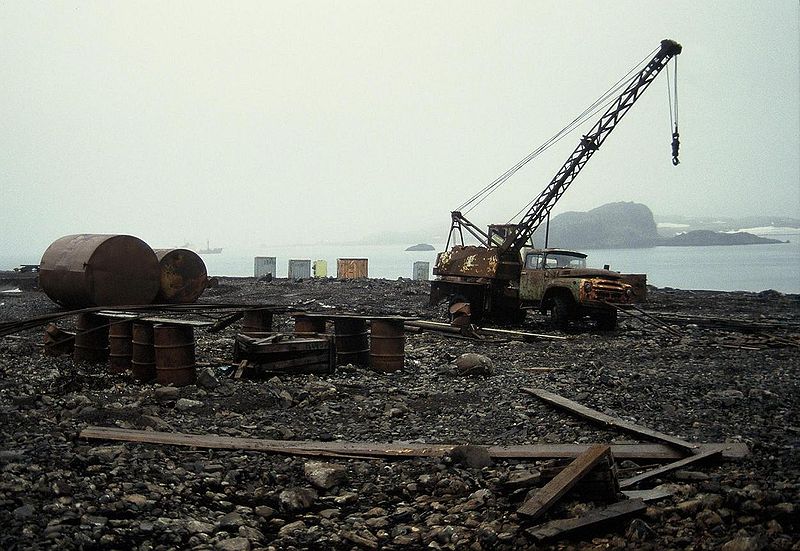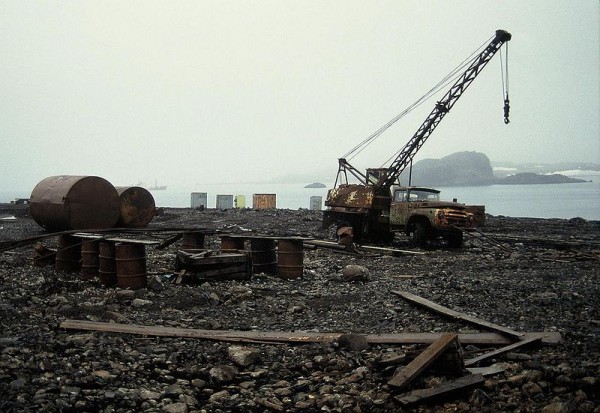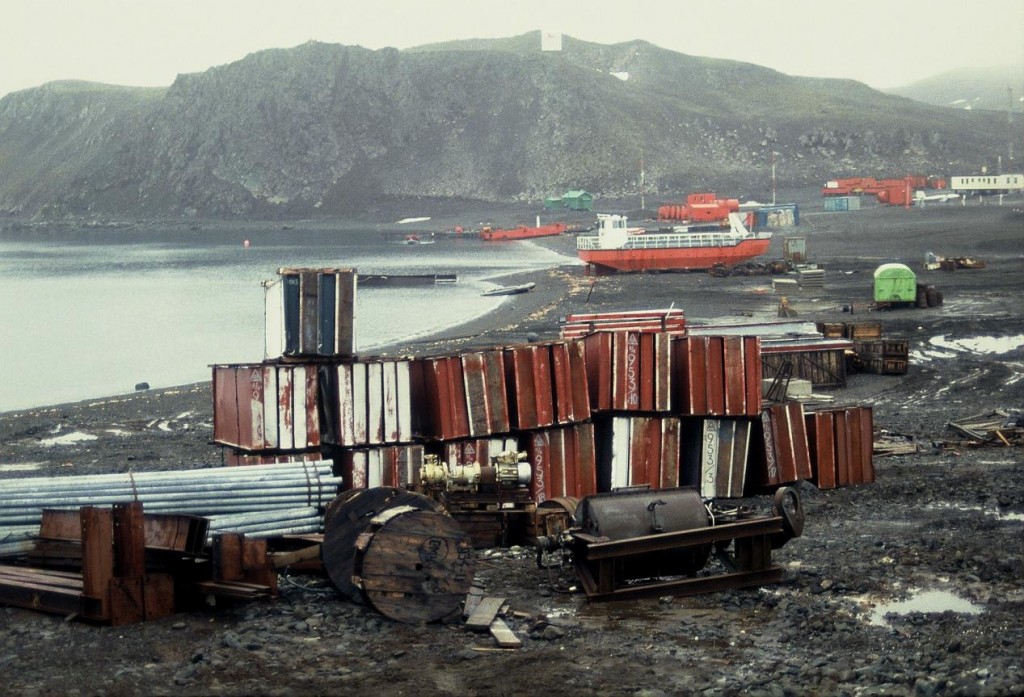Antarctic marine ecosystem threaten by Human Activity

A team of scientists in the United Kingdom and the United States has warned that the native fauna and unique ecology of the Southern Ocean, the vast body of water that surrounds the Antarctic continent, is under threat from human activity. Their study is published this week in the peer-reviewed journal Annals of the New York Academy of Sciences.
“Although Antarctica is still the most pristine environment on Earth, its marine ecosystems are being degraded through the introduction of alien species, pollution, overfishing, and a mix of other human activities,” said team member Dr Sven Thatje of the University of Southampton’s School of Ocean and Earth Science (SOES) based at the UK’s National Oceanography Centre.
Biodiversity can be conceptualised in terms of its information content: the greater the diversity of species and interactions between them, the more ‘information’ the ecosystem has. The team’s conclusions are based on an extensive review of the impacts of a wide range of human activities on the ecosystems of Antarctica. The Antarctic Treaty system, which includes environmental and fisheries management, provides an effective framework for the management and protection of the continent, but some of the threats are not currently being fully addressed.

Some of these impacts, such as pollution, can be relatively localised. However, global climate change caused by human emissions of carbon dioxide and other greenhouse gases has the potential to affect the entire Antarctic region for decades to come.
The researchers point out that rising sea temperatures are already affecting marine creatures adapted to living within a particular temperature range.
A second major consequence of carbon dioxide emission from human activities — ocean acidification — is also likely to take its toll.
“The Southern Ocean is the canary in the coal mine with respect to ocean acidification. This vulnerability is caused by a combination of ocean mixing patterns and low temperature enhancing the solubility of carbon dioxide,” noted co-author Dr. James McClintock of the University of Alabama at Birmingham, USA.
The researchers have identified a range of historical and ongoing human activities that have damaged or restructured food webs in the Southern Ocean over recent decades. At the local to regional scale, these include –
- The hunting of top predators such as whales and seals.
- Overexploitation of some fish species, leading to stock collapses.
- Air and water pollution from shipping traffic, wrecks, and the transport of invasive alien species on hulls and in ballast tanks.
- Tourism, including potential disturbance to breeding bird and seal colonies, as well as being responsible for chemical and noise pollution, and littering.
- Chemical and sewage pollution from research stations and ships, the legacy of historical waste dumping, and pollution from scientific experiments, including lost or unrecovered equipment.
Antarctica has great, untapped natural resources. The Antarctic Treaty currently prohibits the extraction of oil and other mineral resources from Antarctica. The researchers note, however, that many major areas of the Southern Ocean fall outside the Antarctic Treaty region and could be claimed by nations as valuable ‘real estate’ for the future.
Although the Antarctic Treaty and other conventions have measures aimed at reducing the local- and regional-scale impacts of human activity on Antarctica and the Southern Ocean, they cannot address global-scale threats. Among these threats, the researchers highlight the following –
- Depletion of atmospheric ozone (O3). The ‘ozone hole’ was discovered by BAS scientists in 1985 and is caused by the accumulation of atmospheric chlorofluorocarbons (CFCs) used as refrigerants and spray propellants.
- Introduced species. The researchers are concerned that the warming conditions in Antarctica could facilitate colonisation of species previously unreported from the region, with consequences for the structure of its marine food webs. Alien species accidentally introduced by humans are also a major concern.
- The vulnerability of cold-adapted species to observed rising sea temperatures caused by global warming. The researchers argue that the extinction of some species is likely, and that changes in the geographical distribution of others are to be expected. They warn that the further spread and establishment of predatory king crabs on the continental slope of the western Antarctic Peninsula could wreak havoc among its unique seafloor animal communities. The possible invasion by bottom-feeding fishes, rays and sharks with crushing jaws could be equally damaging. They also expect increasing dominance of salps over Antarctic krill, with consequences for animals such as whales, penguins and seals that depend either directly or indirectly on krill.
- Ocean acidification. The researchers note that organisms living in polar regions are uniquely vulnerable to the effects of ocean acidification because of low concentrations of dissolved calcium carbonate in the water column. They cite evidence that declining seawater pH will particularly affect organisms with calcified shells and skeletal elements, such as molluscs, seastars, sea urchins, coralline algae and cold-water corals, They also highlight evidence suggesting that ocean acidification could profoundly alter the structure and functioning of the planktonic food web, with unknown consequences for animals further up the food chain, including commercially exploited fish. They therefore advocate continued and expanded baseline monitoring of ocean chemistry as well as further field and laboratory studies of the impacts of acidification on physiology, growth, and calcification.
The researchers are Richard Aronson (Florida Institute of Technology), Sven Thatje (SOES), James McClintock (University of Alabama at Birmingham) and Kevin Hughes (British Antarctic Survey).
The research was supported by the US National Science Foundation, the Total Foundation (Abyss2100) and the Royal Society.
Antarctica Fact File
Human Impacts on Antarctica and Threats to the Environment – Pollution
Pollution
Everyone has heard of the ozone layer and the ozone hole that allows too much harmful ultra violet light to get through the earth’s atmosphere over the south pole during the Austral spring. This is caused by the pumping into the atmosphere of chlorofluorocarbons (CFCs) by the industrialized world over a long time period.
The ozone hole is the best known example of pollutants that are produced in one place, but have their effects in another. As Antarctica is one of the cleanest, least polluted places on earth it is an ideal location for measuring the spread of global pollutants. Minute traces of man-made chemicals used in other parts of the world can be detected in the snow that falls over the region. They become concentrated in the bodies of local wildlife such as seals and penguins.
Oil spills
Oil spills are an increasing form of pollution in Antarctica as a result of increasing shipping activity in the region. While ships often have facilities to contain waste oil and separate oil from water which is then taken out of Antarctica for disposal, an ever greater presence is bound to lead to more accidents which do happen. In recent years there have been a number of groundings of tourist ships in shallow, poorly chartered waters and also accidents involving fishing boats in pursuit of the Patagonian toothfish.
Flotsam
An increasing problem in Antarctic waters (and in the rest of the world too) is flotsam and debris lost overboard from ships, particularly fishing ships. Bits of fishing net, fishing line, boxes, strapping bands etc. might sound harmless if unsightly, but they can have a deadly effect on wildlife.
Birds and seals get tangled up up lines and net. Fur seals can suffer the most as the youngsters in particular are very playful and what starts off as a game with a plastic band can soon turn nasty as it gets stuck over the seals head. Unable to remove the band it begins to cut into the flesh causing physical injury, infection and ultimately a long and slow death.
More mundane, but equally great threats to Antarctica are the effects of casual pollution that goes along with every day life and activities. In a cold and slowly changing environment the effects of simple events can be there for years. Organic material for instance can take decades to decay where it would be gone in months even in the temperate parts of the world. The outline of footprints on a moss-bank can still be seen years later for instance. (CoolAntarctica)


Commenting rules and guidelines
We value the thoughts and opinions of our readers and welcome healthy discussions on our website. In order to maintain a respectful and positive community, we ask that all commenters follow these rules.